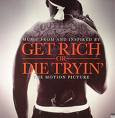
KODIANG, Oct 14 (Bernama) -- People in several villagers here faced a predicament while making preparations to welcome the recent Aidilfitri celebration.
Their coconut trees are laden with fruits that can produce more than enough ‘santan’ (coconut milk) for their chicken curry, rendang, ketupat, lemang and dodol.
But there were no people willing to climb up these trees to pluck the coconut fruits, leaving the job to monkeys and their masters working feverishly to meet the overwhelming demand.
"Look, there is a lot of coconut fruits but no one who can climb to pluck (the fruits). This Hari Raya, I need a lot of coconuts and have to get them from the shop if no monkey comes around” said Hamid Mat, in his 60s, when met at Kampung Paya here.
According to Hamid, even though there were people willing to do the harvesting of coconut fruits, the number was only about two or three.
“Not many are willing to do the job, what more during the fasting month”, he said.
For the not so tall coconut trees, the villagers could still use long poles to pluck the fruits. Otherwise they have to resort to using the services of the monkey or pig-tailed macaque.
Hence, it is no surprise if villagers decided to buy the coconuts from shops even though the coconut trees are in abundance near their houses.
REAR MONKEYS TO PLUCK COCONUTS
For Mohamad Desa Yunos, 56, having two male monkeys aged two and half and three years respectively, to pluck coconuts helps him earn a living.
Assisted by nephew Hassan Ariffin, 48, Mohamad went around villages with his monkeys ‘Awang’ and ‘Leh’ to offer coconut-plucking services that draw encouraging response from the villagers.
“Many need the monkeys to pluck coconuts particularly during the fasting month," said Mohamad Desa, who is also known as Abang Cha and who had been involved in this industry since his youth days.
According to Abang Cha, initially he reared the monkeys for fun but later the hobby grew into a sort of permanent occupation for him.
"We charge three coconut fruits out of every 10 we harvested. If the owner wants to sell, we are willing to buy the rest of the fruits," he said.
The money earned from the job is good enough for the Kampung Kubang Pangas-born Abang Cha and Hassan who hails from Kampung Keda Wang near here.
MONKEY MASTER
Another master of the monkey harvesters is 63-year-old Che Meh Ahmad, 63, from Pida Empat near here.
He said the monkey posses enough strength to pluck as many coconut fruits as possible.
Che Meh said it is not easy to train the monkey to obey its master’s instructions as the ape could be lazy or suddenly turn ferocious and attack any person it sees as a threat.
Among the fears of the master is when the monkey decided not to follow instructions and instead of coming down, it might decide to take a rest among the palm fronds up on the trees.
They have to be extra vigilant especially when the monkey gets amorous or during its mating season as the ape could turn dangerous.
“During this time, if we give them food they would throw it away, if we instruct them to climb the tree, they would ignore and worse still they might attack us," he said.
EIGHT TO 10 YEARS
Che Meh said the monkey should be trained on how to pluck the coconuts using its legs instead of the hands as this way is faster and gives less risk of the monkey losing its grip and falling to the ground.
He said the monkey could work between eight and 10 years. After this the monkey gets too old for the job.
Che Meh also said the monkey should be used to pluck the fruits daily as any breaks from the routine would make the animal lose its skills and manual dexterity in the coconut-plucking job.
There are three phases in the training of the monkeys to perform the coconut-plucking job.
The first phase is to teach the monkeys on the ‘thrills’ in plucking and to make the ape enjoy doing the work.
The second phase involves on making the monkey to learn to know instructions issued by its master via the hand signals and sounds made.
The final stage is when the monkey is made to go up and down the coconut tree as where and when told to do so by its master. This is the stage where the monkey is either to have passed of failed the ‘test’.
-- BERNAMA





No comments:
Post a Comment